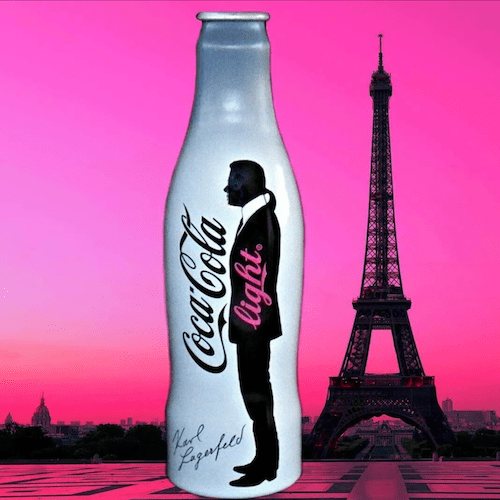To bring a business project to fruition, it's essential to build a network and establish reliable partnerships in a wide range of fields.
Marketing is no exception. To develop your brand's reputation, you'll need to implement a communication strategy, activating multiple levers.
Among them, co-branding can prove highly fruitful. The concept? Create a joint marketing or advertising campaign.
In this article, we'll explain what co-branding is, describe its advantages, provide you with our top tips for co-branding initiatives, and give you some examples of successful co-branding programs to help inspire you!
Table of contents
Definition and meaning of co-branding: When two brands join forces
Competition is fierce, and any means to stand out from the crowd is beneficial. That's why more and more brands are opting for co-branding. It's a marketing strategy that often promises excellent returns, and helps to raise brand awareness while attracting new customers.
How does co-branding work? What does it involve?
Co-branding is the association of two brands who decide to create a new product together. In some cases, it's an ephemeral operation. In other cases, the strategic alliance becomes permanent.
It's also important to distinguish between co-branding and co-marketing. In the second case, it's a simple partnership between two brands. On the other hand, no new product is designed especially for the occasion.
Co-branding, on the other hand, is a launch offer. In other words, the two brands join forces to design a new product or service offering. Their resources are pooled. Here, as the investment is shared, so are the revenues reaped. It's a win-win situation!
Is co-branding the same as a collaboration?
Co-branding and collaboration often overlap but are not the same. Co-branding specifically involves two or more brands partnering to create a product that leverages the strength and market appeal of each brand, often seen in consumer goods like food or fashion.
By co-branding, you're not choosing to work with an influencer, agency or designer from outside your company. Co-branding goes far beyond the simple provision of services. It's an equal partnership between two brands.
A collaboration is broader, encompassing any cooperative arrangement between parties (which could be individuals, companies, or institutions) to work together on shared goals, not limited to product development but also including joint research, marketing, and other projects.
When and how do you use co-branding?
Once you've created your brand and established your products on the market, there are a number of situations in which co-branding may be appropriate. In fact, co-branding is a marketing strategy that can meet a number of challenges:
- Acquire new customers: Co-branding enables each company to make itself known to new consumers. Some of the partner brand's customers may decide to take an interest in your brand that they had never considered before.
- Build brand awareness: Co-branding frequently generates buzz. It's a type of operation that generates a lot of buzz. It's therefore a great way to publicize your company.
- Reinforce your corporate image: Co-branding is synonymous with innovation, dynamism and openness. It's also a great way to build your brand and increase goodwill for your brand image.
- Renew your catalog: Because you should never rest on your laurels, co-branding allows you to break with routine, bringing in new ideas and a healthy dose of innovation. This partnership may even surprise you!
What are the three levels of co-branding?
Co-branding can be categorized into three distinct levels, each representing a different degree of integration and strategic alliance between the brands involved:
- Ingredient co-branding: This involves incorporating a well-known brand as a component or ingredient into another brand's product. For example, a laptop featuring Intel processors prominently displays the Intel logo alongside its own, suggesting quality and performance through the association.
- Composite co-branding: This level occurs when two or more brands collaborate to create a new product, leveraging the strengths and market appeal of each. The creation typically carries both brands' names. This method can enhance the product's credibility and appeal, broadening its market reach. An example is the collaboration between Nike and Apple to create the Nike+ product line.
- Same-company co-branding: This occurs when a company markets two or more of its brands together on the same product or campaign. This strategy can be used to combine different product lines under one umbrella brand to enhance the overall corporate brand's visibility and consumer reach. For instance, a company like Procter & Gamble might co-brand its laundry detergent with its fabric softener.
Each level of co-branding aims to capitalize on brand equity, attract diverse consumer segments, and create synergy that benefits the participating entities.
Reasons to co-brand: What is the list of advantages?
Co-branding is a marketing approach that can offer multiple benefits for both companies and their brand images. If co-branding is a powerful lever, it's primarily because it has three main advantages.
Increased brand visibility
Co-branding isn't just about numbers and sales; it's a symbolic and functional transformation that can redefine your brand landscape. How do you rekindle the flame of brands in the hearts of customers and create an event? That's exactly what co-branding can do, bringing numerous benefits to co-branded companies.
Co-branding brings visibility benefits to both brands. This marketing strategy enables them to stand out from the competition, create a buzz, and make their offers more visible. What's more, each brand can benefit from the influx of customers from the other. The purpose is to increase the size of the market and be seen by new consumers.
Co-branding enables both companies to take advantage of new distribution channels. Ultimately, this technique will boost sales by generating more sales. For each brand, co-branding opens up new distribution channels. The aim here is to maximize the potential of each distribution channel, whether web, retail, or even direct sales.
One of these advantages is the boost generated on the customer base side. Your company has a customer base, and so does the partner company. By joining forces, you can imagine the impact you can have by sharing your databases.
Design also plays a major role in this process. By uniting two brands, you not only merge their customer bases or distribution channels, you also merge their visual identities. The challenge lies in combining these designs to create a new image that captures the essence of both brands. A most exciting project, which could use the support of professional design agencies to take it even further!
With the symbolic power that each brand possesses, co-branding is a solution for revitalizing a brand, giving it another dimension while opening up the field of vision for customers. It should be seen as a shared adventure, bringing new vitality and energy to both companies' catalogs and offers.
Enhanced credibility in the marketplace
Co-branding is an excellent way of reinforcing a brand's position in its environment. What's more, it is also very useful for improving the perception of the company in the eyes of consumers.
As we've seen, in such a partnership, all resources are pooled. And it also means sharing respective values. The strengths of both brands are highlighted. Each brand benefits from the best aspects of the other's image. Credibility is immediately enhanced!
Co-branding can also be compared to an additional showcase for companies. There's no doubt about it, this process provides a great opportunity to optimize one's aura, one's place in consumers' imaginations. It's a set of shared values that come together to form a new whole. Each entity benefits from the unique strengths and positive associations of its partner, and credibility grows in the blink of an eye!
Of course, the visual aspect of a brand is important, but co-branding is also about sharing relevant, high-quality content. This content needs to be well thought-out, engaging, and prove the added value of this collaboration for him, in order to give meaning to the novel association.
To make these collaborations a reality, turning to communications agencies can be a key to success. These branding and marketing experts understand how to merge the strengths of two different brands harmoniously and effectively. Their skills optimize the image of each brand while preserving their individuality.
Diversified offerings and audiences
Co-branding can help you strengthen your positioning. However, because the two brands are rarely perfectly identical, co-branding is also often used to evolve positioning. It's a great opportunity to diversify. Co-branding enables you to address new customers and target a wider audience. This is one of the main advantages of the complementary nature of the two companies.
For loyal customers, co-branding is also a significant added value. It's always synonymous with innovation and evolution. It reflects the company's innovation. It prevents you from falling into a rut.
If you don't want your customers to tire of your offer, co-branding is an excellent way to breathe a breath of fresh air into your shelves! Your most loyal customers will thank you for it. Chances are, they'll be even less tempted to turn to the competition!
Co-branding also represents a significant financial advantage. Costs and investments are shared between the two brands. The marketing budget, for example, is halved, as are research and set-up costs. Pooling skills and ideas also boosts creativity tenfold. Finally, outsourcing costs are considerably reduced. In other words, it's a great way of pooling resources.
How do you succeed with your co-branding strategy?
As with any marketing strategy, co-branding is not an exact science, nor does it guarantee 100% success. For co-branding to work, it's essential to prepare the partnership well in advance and to respect certain criteria.
Consistent positioning of both brands
First and foremost: you absolutely must partner with a brand that shares your values! In other words, this strategic alliance must seem natural or complementary. For your customers, it must seem coherent. If it doesn't, customers can feel betrayed. The repercussions can be disastrous!
Note, however, that you don't have to choose a company belonging to the same business sector as yours. The two brands may come from very different fields. If the values are the same, it works!
Creating such a partnership can be a major challenge. But with careful preparation, these partnerships can work, even over the long term. Over the years, the symbiosis of two brands with shared aspirations can become a strong union, an alliance that conveys a strong symbolic message to customers, almost creating a new brand from the fusion of the two.
The real objective of any brand strategy is to offer a coherent, authentic experience. An experience that goes beyond a simple business transaction to create a true and lasting connection. A connection that connects, inspires and makes you want to come back again and again. By adhering to these principles, your brand will not just be a commercial entity but an integral part of your customers' lives!
The complementary nature of co-branded communication
To maximize the benefits of such a partnership, choose a brand that has something to offer you. If your customers are already identical, and your in-house skills are exactly the same on both sides, co-branding may not be worthwhile... On the other hand, if each party in the partnership can bring the other new customers, resources, or skills, the operation becomes much more interesting!
The right choice of partner company can create an astonishing synergy between two market forces. So, to boost your co-branding project, you'll want to explore uncharted territory in your sector.
Highlight the skills of both your company and your target audience. Combined, these characteristics can give life to an original, dynamic offering of great value to the public. Innovative design, for example, can transform customers' perceptions of the products and services on offer.
When developing a co-branding strategy, be sure to include the internet in your planning! The web is ideal territory for creating and developing new opportunities. It has enormous potential for reaching a wider, more diverse audience. A well-harmonized online presence can amplify the impact of your partnership, giving it maximum visibility.
Good knowledge of target audiences
As we saw earlier, co-branding is based on the launch of a new product. In fact, it can sometimes enable you to offer something that you wouldn't have been able to develop on your own. Nevertheless, for the operation to work, you need to take the time to reflect, with the other company, on the value proposition you wish to bring with your new product. How will your customers benefit? What need will the new product meet?
To do this, you need to know your target audience inside out. You'll need to jointly define your personas, so as to address all these potential customers, explaining your approach and communicating the reason for this partnership.
If you're planning to establish your partnership solely in one area, like NYC, for example, think about the important values shared in that location, such as a strong sense of style and ambition. Companies looking to embark on a co-branding operation need to be aware of the importance of quality, tradition and innovation in the hearts of New Yorkers.
Once the objectives have been defined, with the internet as an ally and the NYC region as a playing field, the final step is to understand the personas—the customer profiles that the new product aims to appeal to.
Each persona has its own needs, desires, and motivations. The secret is to understand these nuances and integrate them into the product's value proposition. Striking the right balance between the expectations of the company and those of customers is the key to successful co-branding.
5 Successful examples of co-branding partnerships with co-branded products
I hate to break it to you, but if you decide to set up a co-branding operation after building your ecommerce brand, you won't be the first to try it! Many such partnerships have already been set up, and some of them have been particularly successful. Here are just a few examples.
Apple x Hermès

In 2015, Apple and Hermès decided to work together to design a new Apple Watch featuring an exclusive dial, refined materials and a variety of brightly colored straps.
The partnership came about simply because the two brands share a common vision. Hermès and Apple share strong values of innovation. What's more, both are high-end, luxury brands.
The two partners complement each other well and enhance each other's image: Hermès being one of the giants of French elegance, and Apple being the master of global technology. Naturally, the results lived up to all expectations, with functional, intelligent, and highly elegant watches. The public was bound to be delighted!
Adidas x Gucci

Between Gucci and Adidas, there's another success story... So successful, in fact, that it continues to be repeated.
The two brands have been working together for several years now. During its Autumn-Winter 2022-2023 show at Milan Fashion Week, Gucci took the opportunity to present a series of products co-designed with Adidas, combining the creative codes of both brands. For the occasion, even the logo was transformed, combining the iconic Adidas clover with the Gucci wording.
This co-branding campaign is a perfect combination of two very different styles: athletic comfort on one side, street elegance on the other. If you've ever dreamed of wearing heels emblazoned with a sports brand logo, now you can!
Karl Lagerfeld x Coca-Cola

Let's take an even more unexpected example... It's no secret that the world of soft drinks and the world of fashion don't usually mix very well!
Yet in 2010, Coca-Cola took up the crazy challenge of collaborating with fashion designer Karl Lagerfeld. For the first time in the drink's history, an internationally renowned designer dared to associate his name with the Coca-Cola campaign, while creating a new color scheme for the bottle.
Better still, the designer's profile appeared on the packaging as a shadow figure, glowing in the dark. On-screen, models Coco Rocha and Baptiste Giacobini even appeared in the product's ad! It was enough to create a buzz and boost the visibility of both Karl Lagerfeld and Coca-Cola!
For the record, Karl Lagerfeld also readily confessed that it was his favorite drink...
Nike x Michael Jordan
The co-branding between Nike and Michael Jordan is a little different. It doesn't involve two brands, but rather a sports / ready-to-wear brand and a public figure. As a reminder, and especially for the younger generation, Michael Jordan is a true NBA legend! So the association seemed obvious!
However, Michael Jordan didn't just lend his image to Nike in a TV spot. An entire shoe collection was dedicated to him, and the Air Jordan range was born, bearing the basketball player's effigy. Of course, the basketball star also became part of Nike's visual communication. This collaboration was much more than a simple advertising partnership.
In fact, this collaboration was the subject of a film, “Air,” released in 2023 on Amazon Prime Video.
Dolce & Gabbana x SMEG

Finally, let's end this overview with an even more surprising co-branding, between SMEG and Dolce & Gabbana. The former is an Italian household appliance manufacturer. The latter is an iconic Italian fashion house. Together, in 2016, the two brands developed home products with an atypical design, hand-painted and daringly colorful.
If you like to liven up your home, this collection is sure to please! In fact, the response to this collaboration was unprecedented. As proof, the announcement of this co-branding campaign was even featured on over 500 magazine covers worldwide. The Financial Times, the Sunday Times Style, Vogue, Tatler, Harper's Bazaar, The Telegraph Magazine, Elle Decoration, GQ... all the press got hold of the subject, which greatly benefited the visibility of both brands.
Co-branding: A powerful marketing strategy
Like any marketing operation, co-branding is an event that needs to be prepared in advance. It's not always easy to know which brand to associate with, or to convince potential partners. To take this step and benefit from all the advantages of this communication strategy, you'll need a solid sales pitch. Your sales know-how will undoubtedly be one of your greatest assets!










